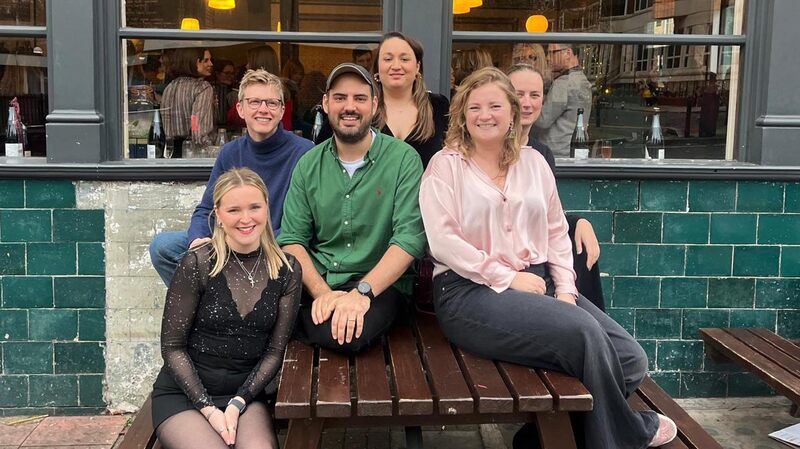You are viewing your 1 free article this month. Login to read more articles.
Going deeper with data
With so much rich audience insight out there, publishers need to develop better skills to navigate data.
This month marks my first year running Convert Culture, my consumer insight and marketing agency. There’s a lot of fear but also a lot of freedom in running your own business. Fear, I’ll leave you to imagine. On the other hand, freedom is more than the flexibility of your time—there’s also the freedom to explore and think differently. I’ve spent almost a year now exploring new approaches to consumer insight—ones that use vast swathes of data based on profiling audiences on platforms such as Meta.
Audience insight isn’t new. There have been a few iterations of it in publishing, much of it limited by the information and methods available. The insights we can take from that work broadly split into two camps: big, broad information looking at the nation as a whole or narrow, hardcore book-buying audiences. Both are helpful but often feel frustratingly obvious in their insights. You never feel like you were getting to the good stuff—those audiences that can make a difference to a book’s trajectory and help it truly break out, if we understand and approach them in the right way.
In the meantime, brands and other entertainment industries have revolutionised how they get closer to their audiences by looking at their consumer’s digital footprint. And this is where my attention has been focused. The bad news? None of them work as a wholesale solution for publishing teams. But there are some clues here.
My experimentation culminated in an extensive piece of research for Hardie Grant looking at cookbook buying audiences. Of all the genres we tried to understand in my old in-house role, cookery was the most complex. Not only did people not self-identify on any book survey data as a “reader” of cookbooks (who would?) but the bigger national survey data could only really reach the household TV names. Moreover, attempts to understand this via social listening tools that look at public conversations primarily on Twitter can be incredibly limited in their usefulness, for any genre, but especially cookery.
To keep pushing the envelope in this space, we need to develop our own methodologies and teams
For this project, I partnered with Audiense. Audiense describes itself as “an advanced audience intelligence platform”. Their platform combines a variety of data sources to help you to understand a target audience you define—but much of the rich data comes from Meta. This is declarative, behavioural, and socio-demographic information from the Meta advertising platform. All anonymised of course. It’s “likes”, clicks and interactions, rather than the public conversations that social listening tools look at.
The data is huge in size and scope. And it had never been used in publishing before. So I had to find a way to make sense of it so we could identify the core cookbook-buying audiences driving the UK market.
For each of these core audiences, the data was so rich that I could see where they were in the country down to the local authority with the most fans, who they were, their preferences for ingredients or cuisines, brands or shops. It was also possible to see personality traits and concerns, and how price-sensitive they were, whether they were health conscious or interested in the environment, veganism (or not), whether they loved visiting restaurants or ordering in, plus even some attitudes to things like design. All benchmarked against the entire population on Meta. By looking at the data, we could start to unpick some clear needs that drove their interest in specific cookbook titles, giving us ideas about what else might appeal to them and how to better position books we already have towards them.
There is so much potential in this kind of work for both fiction and non-fiction. It can look at an author and analyse their audience or it can look at an entire genre or those that cluster around a topic or interest. It can be used to help direct a project or a campaign but it can also be used to support a creative leap for an author into an entirely new genre and audience they’ve never connected with before.
There is no magic bullet, no algorithmic button that removes creativity from the process and (as I’ve been at pains to explain on my Substack) it’s not right for every book. When I present a piece of research, I often talk about how I’m giving teams information rather than “data”, a word which I think can evoke some preconceptions. It’s more information than you had before, but you or the author and their team need to understand when it’s relevant.
And that means this work needs to go hand in hand with publishing industry experience. Many publishers turn to people from brands for their insight teams, keeping them siloed from publishing houses. To keep pushing the envelope in this space, we need to develop our own methodologies and teams. We need people who understand publishing to spot the opportunities and bring publishing teams along with them.
Many have disregarded consumer insight as costly, ineffective or painfully slow. That is no longer the case. Moreover, there’s a real competitive edge to be gained by the use of these approaches—one that can bring returns both in book sales and creativity.




















